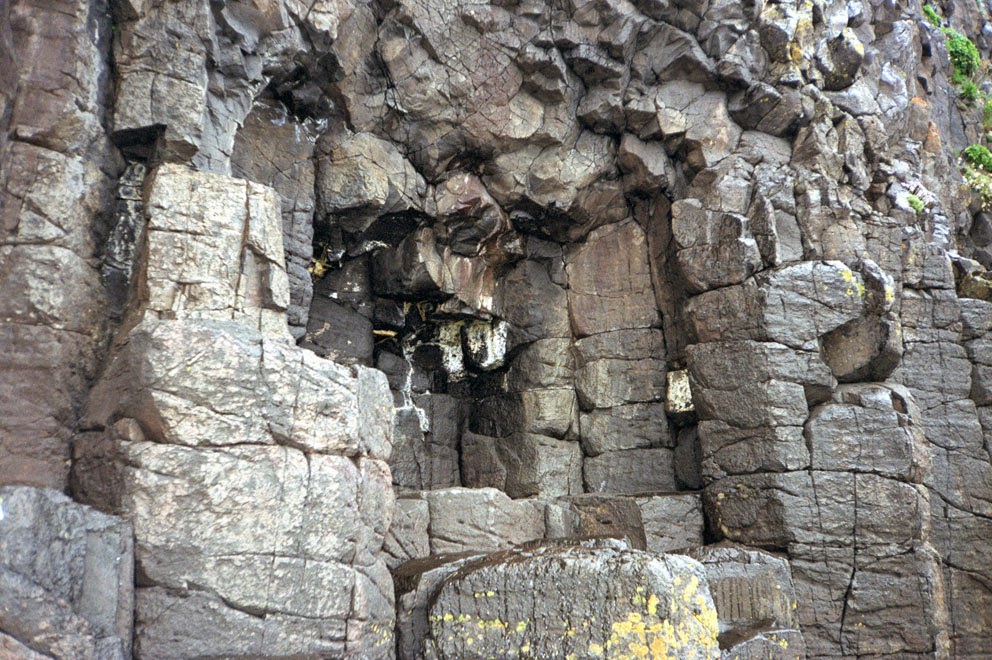Let me introduce you to the island of Carna, in Loch Sunart, with the following passage from Haswell-Smith's The Scottish Islands:
...the west side of Carna is steep and unwelcoming. Wet, slippery and boggy with abrupt rocky slopes covered in a profusion of flag irises, tufts of spagnum moss, bracken, grass and scrub birch.
How I wish I'd read this before my first visit to Carna. It was back in the spring of 2006, and I was on the boat Chalice. After anchoring in Loch Sunart, between Carna and Oronsay, most of the passengers were set ashore on Oronsay, but I asked to be dropped on Carna. And so the skipper, Chris Jackson, set me ashore on the west side of the island.
It was indeed unwelcoming terrain; steep, and covered with thick vegetation that hid treacherous holes in the ground. It was a tiring and slow slog to reach the high ground above the shore. But it was worth it. From up top I had panoramic views over Loch Sunart, Morvern, and Ardnamurchan.
That was my first and, to date, only visit to Carna; however, my first 'encounter' with the island was in the early 90s, when I read Nigel Tranter's The Lord of the Isles (1983). The novel starts with a battle in Loch Sunart between Somerled (the Lord of the Isles), with his fleet of boats manned by army of Irish Gallowglasses (mercenaries), and Norsemen, who were occupying the nearby mainland.
Somerled takes his fleet into the lagoon called Loch na Droma Buide, between Oronsay and the mainland (still a popular anchorage), and beaches his ships on the tidal island of Oronsay. At low tide his army marches across to the mainland and, with Carna dominating the skyline to the west, they proceed to Kinlochaline via the shores of Loch Teacuis, Loch Doire nan Mart and Loch Arienas. Somerled then proceeds to slaughter the Norsemen living in the Kinlochaline area, capturing some of their longships, and using those ships to make a raid into the Firth of Lorne to rout out more of the Norsemen.
It was the memory of that exciting opening to Tranter's wonderful book, a book that tells the story of how the Lord of the Isles solidified his hold over the west of Scotland, that led me to ask to be set ashore on Carna. And I wanted to climb to the top to obtain a view over the terrain described in the opening sequence of Lord of the Isles.
From the highlands of Carna I could see down to Dailachreagain, Carna's main settlement area. Aside from not having much time, I was also too tired to walk down there and back. So I found a place to sit, enjoyed the view for a while, and then made my way slowly back down to the western shore.
Someday I hope to stay on Carna, as there is a
holiday cottage for let (you can just see its roof to the left in the second photo). If you ever visit learn from my mistake, and go ashore on the east side. Below are a few photos from that all-too-short visit to Carna.
 |
| Looking north from the Carna highlands |
 |
| Settlement site (Dailachreagain) - Carna |
 |
| Atop Carna looking west up Loch Sunart - Eilean nan Eildean to the left, Oronsay to the right |
 |
| Looking west up Loch Sunart - 2 |





























